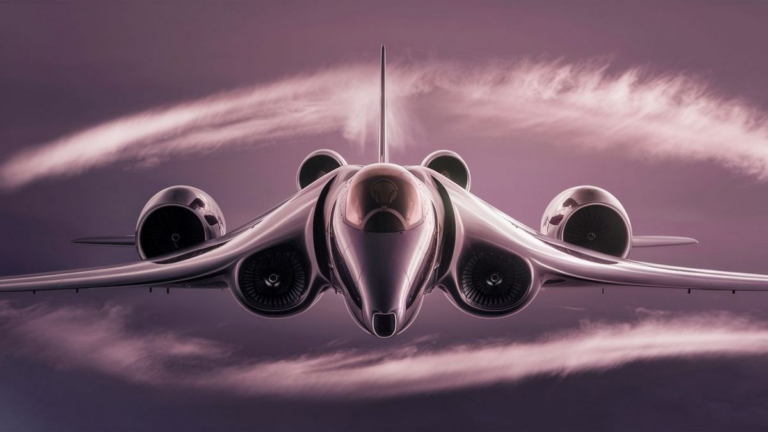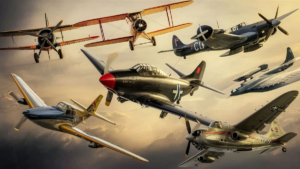Welcome to the exhilarating realm of aviation, where cutting-edge technology propels us to new heights and speeds. In this article, we will delve into the awe-inspiring world of the fastest planes ever created, exploring the incredible feats of engineering that have enabled these machines to defy gravity and push the boundaries of speed.
The Need for Speed
Human fascination with speed has been a driving force in the evolution of aircraft. From the pioneering days of flight to the present, engineers and aviation enthusiasts have sought to answer the question: How fast can we go? This quest has led to the development of some truly remarkable flying machines.
Unveiling the Titans of the Sky
Among the titans of the sky, the Lockheed SR-71 Blackbird stands out as an iconic symbol of speed and technological prowess. Developed by Lockheed’s Skunk Works division, this reconnaissance aircraft holds the record for being the fastest plane ever built. Capable of reaching speeds exceeding Mach 3, or three times the speed of sound, the Blackbird could cover vast distances in remarkably short periods.
The SR-71 achieved its remarkable speed thanks to its innovative design and powerful engines. Its sleek, aerodynamic shape minimized drag, while its twin Pratt & Whitney J58 engines, equipped with afterburners, propelled it to unprecedented velocities. The Blackbird’s ability to cruise at high altitudes also contributed to its extraordinary speed.
The Thrill of Supersonic Flight
Beyond the SR-71, several other aircraft have embraced the thrill of supersonic flight. The Concorde, a supersonic passenger airliner, once graced the skies, offering a luxurious and swift travel experience. While not as fast as the SR-71, the Concorde could reach speeds of Mach 2, providing a transatlantic journey in just a fraction of the time it takes conventional aircraft.
Modern Marvels
As technology continues to advance, so does the quest for speed. The North American X-15, a rocket-powered aircraft from the 1960s, set numerous speed and altitude records, showcasing the relentless pursuit of pushing the boundaries of flight. In the modern era, experimental aircraft and cutting-edge designs continue to emerge, promising even greater speeds and capabilities.
Looking to the Future
With ongoing advancements in materials, propulsion systems, and aerodynamics, the question of how fast the fastest plane in the world can go remains open-ended. Engineers and aviation enthusiasts alike eagerly anticipate the next breakthrough that will propel us into a new era of speed and innovation.
As we marvel at the achievements of the past and present, one thing is certain: the quest for speed in aviation is an unending journey. From the legendary SR-71 Blackbird to the sleek Concorde and beyond, each aircraft represents a testament to human ingenuity and the desire to explore the skies at unparalleled speeds.
Revolutionizing Aerospace Design
Advancements in aerospace design play a pivotal role in shaping the fastest planes. Cutting-edge materials, such as lightweight composites and alloys, contribute to enhanced structural integrity and reduced weight, crucial factors in achieving and maintaining high speeds. Engineers continuously push the boundaries of materials science to create aircraft that are not only faster but also more efficient and resilient.
Frequently Asked Questions
| Question | Answer |
|---|---|
| 1. What makes a plane capable of achieving high speeds? | A combination of aerodynamic design, powerful engines, and lightweight materials contributes to a plane’s ability to achieve high speeds. |
| 2. Are there any upcoming aircraft projects focused on speed? | Several ongoing projects explore hypersonic and next-generation aircraft, aiming to push the limits of speed and performance. |
| 3. How do supersonic and hypersonic speeds differ? | Supersonic speeds exceed the speed of sound, while hypersonic speeds are several times faster, often reaching Mach 5 and above. |
Pushing Hypersonic Boundaries
Amidst the quest for speed, hypersonic flight has emerged as a frontier worth exploring. Hypersonic planes, traveling at speeds greater than Mach 5, present new challenges and possibilities. The potential for rapid global travel and military applications has spurred research into hypersonic propulsion systems and innovative vehicle configurations.
Challenges and Innovations
Designing aircraft that can withstand the extreme conditions of hypersonic flight requires innovative solutions. Thermal management becomes a critical concern, as air friction at such speeds generates intense heat. Engineers are exploring advanced cooling systems and heat-resistant materials to address these challenges and unlock the full potential of hypersonic flight.
See also:






